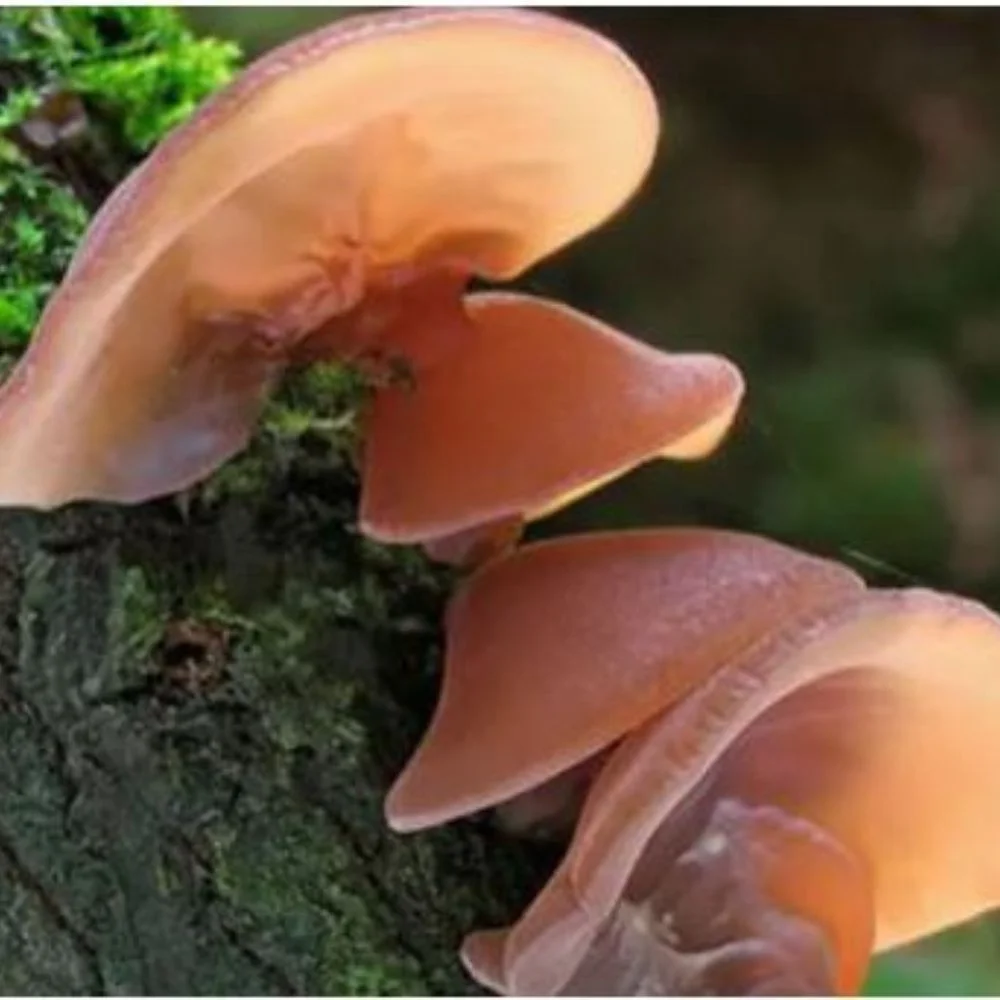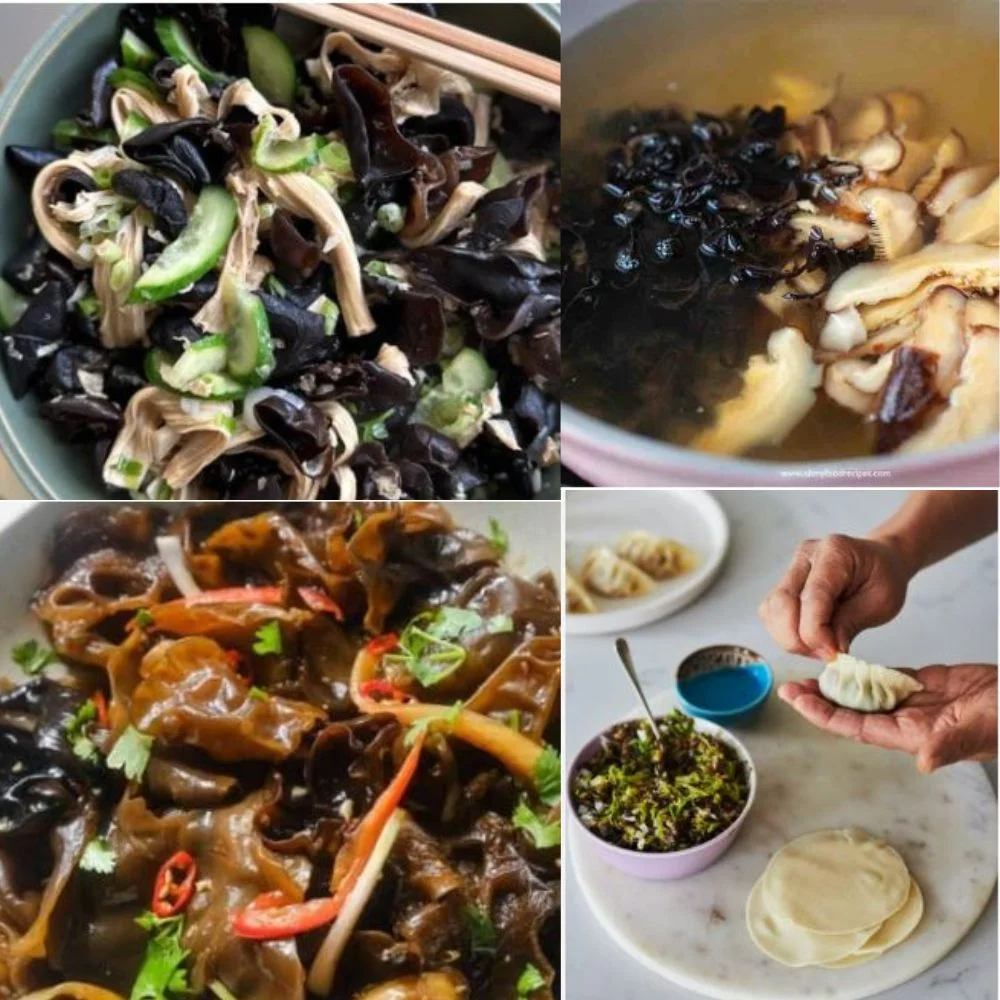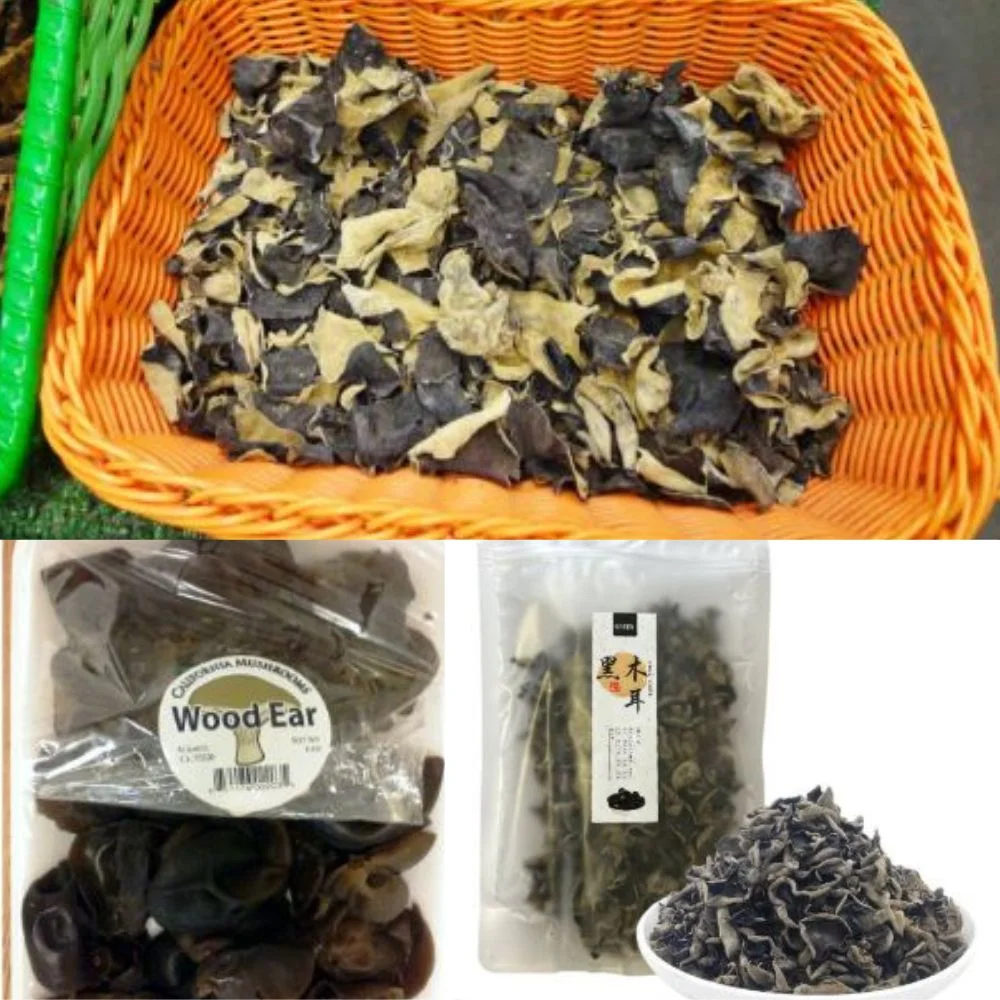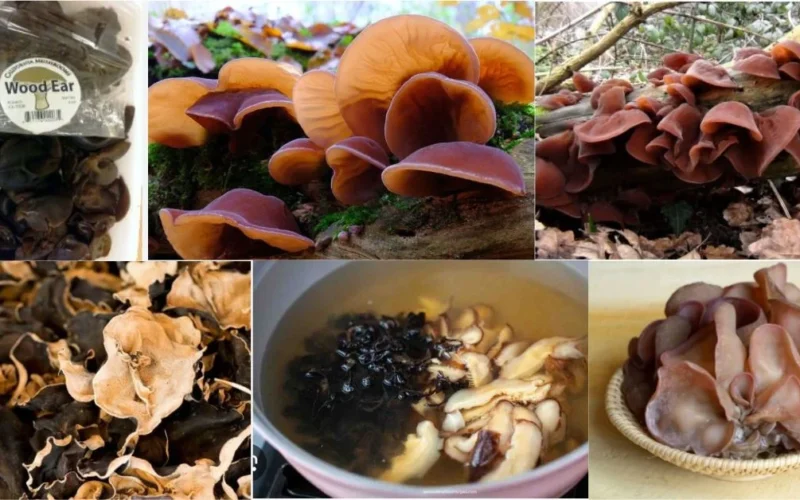Table of Contents
What is a Wood Ear Mushroom?
Wood ear mushrooms, scientifically known as Auricularia auricula-judae, are a type of edible fungus that grows on tree bark, particularly elder trees. They’re native to Asia but found all over the world and have been used in traditional Chinese medicine for centuries.
Their name comes from their ear-like shape and rubbery, gelatinous texture. In Chinese, they’re often called “mu er” (木耳), which literally means “wood ear.”
Appearance and Texture

Unlike the typical button or shiitake mushrooms you might see at your local grocery store, wood ear mushrooms are thin, brown to black and jelly-like. When dried, they look wrinkled and crinkly but they expand dramatically when soaked in water almost like magic. They have a crunchy, almost springy texture rather than a strong flavor, making them a perfect addition to dishes for a bit of bite.
Wood Ear Mushroom Health Benefits
Wood ear mushrooms pack a surprising number of health benefits that make them worth adding to your diet.
1. Rich in Antioxidants
Antioxidants are compounds that help combat oxidative stress in the body. Oxidative stress can damage cells and contribute to aging and various diseases.
Wood ear mushrooms are high in polyphenols, which are potent antioxidants. These compounds help neutralize free radicals, potentially lowering your risk of chronic illnesses like heart disease and cancer.
2. Supports Heart Health
Several studies have linked wood ear mushrooms to improved cardiovascular health. Here’s why:
- Blood thinning properties: Wood ear mushrooms actively support blood circulation by helping to prevent excessive clot formation. This makes them beneficial in preventing strokes and heart attacks, especially in those with high cholesterol or blood pressure.
- Cholesterol control: Some research suggests that these mushrooms can lower LDL (bad) cholesterol while boosting HDL (good) cholesterol.
3. Boosts Immune Function
Traditional medicine has long used wood ear mushrooms to strengthen immunity. Modern science backs this up, these mushrooms contain polysaccharides, natural compounds known to stimulate the immune system. These immune-enhancing effects can help your body fight off infections and inflammation more effectively.
4. High in Fiber
Wood ear mushrooms are a fantastic source of dietary fiber which plays a critical role in digestive health. Fiber promotes regular bowel movements, helps control blood sugar levels and keeps you feeling full longer. If you’re trying to improve gut health, adding these mushrooms to your diet is a tasty and easy way to get more fiber.
5. Low in Calories
One of the best things about wood ear mushrooms? They’re low in calories and fat-free. A cup of soaked wood ear mushrooms contains fewer than 50 calories but offers a satisfying crunch and texture that can bulk up meals.
Culinary Uses: How to Eat Wood Ear Mushrooms
How great wood ear mushrooms are for your health, let’s talk about how to eat them?

1. Hot and Sour Soup
Probably the most famous dish featuring wood ear mushrooms, this soup is a staple in Chinese restaurants. The mushrooms add that delightful chewiness that pairs perfectly with tofu, vinegar and chili.
2. Stir-Fries
Add wood ear mushrooms to any stir-fry for extra texture. They go well with vegetables like bok choy, carrots, snow peas, and proteins such as chicken, beef, or tofu. They soak up sauces beautifully, especially ones with soy, oyster sauce or hoisin.
3. Cold Salads
In Chinese cuisine, cold wood ear mushroom salads are popular. The mushrooms are blanched, chilled, and then dressed with a mixture of vinegar, garlic, sesame oil, soy sauce and chili. These salads are light, refreshing and a great make-ahead option for summer meals.
4. Dumplings and Rolls
Minced wood ear mushrooms can be added to dumpling fillings, spring rolls and even bao buns. They offer bulk without overwhelming the flavor profile and their crunch is unbeatable.
5. Soups and Broths
Even if you don’t want to eat them directly, adding wood ear mushrooms to broths adds depth and earthiness. They’re excellent in miso soup, ramen and other noodle-based broths.
How to Prepare and Cook Wood Ear Mushrooms?
1. Buying Tips
Wood ear mushrooms are most commonly sold dried. You’ll find them in Asian markets, health food stores, or online.
When shopping:
- Look for whole pieces instead of small shreds.
- Avoid packs with lots of debris or discoloration.
- Choose organic if possible.
2. Rehydrating Dried Wood Ear Mushrooms
Before cooking, you need to rehydrate the mushrooms:
- Soak in warm water for 15–20 minutes.
- Watch as they expand they’ll get about 4-5 times bigger.
- Rinse well under running water to remove any debris or sand.
- Trim off any tough stems before using.
3. Cooking Methods
You can boil, stir-fry, steam, or even pickle wood ear mushrooms. They cook quickly usually within 3–5 minutes and can be added at the end of dishes to retain their texture.
Are There Any Side Effects?
Generally, wood ear mushrooms are safe to eat in moderation. Keep these important points in mind before adding wood ear mushrooms to your diet.
- Allergies: Some individuals may experience allergic reactions, just like with other foods.
- Blood thinning: As mentioned earlier, their natural blood-thinning properties could interact with medications.
- Quality control: Always buy from a reputable source to avoid contamination with harmful fungi or toxins.
Storage Tips

- Dried mushrooms: Store in an airtight container in a cool, dark place. You can store them for as long as a year without losing quality.
- Rehydrated mushrooms: Use within 1–2 days and store in the fridge. Don’t refreeze after soaking.
Where to Buy Wood Ear Mushrooms?
Not sure where to start? Try these places:
- Local Asian grocery stores: Often found in the dried goods aisle.
- Online retailers: Amazon, iHerb, Thrive Market.
- Health food stores: Especially those that focus on traditional or herbal remedies.
Look for brands that clearly label the country of origin and provide organic certification if possible.
Practical Cooking Tips
- Slice them thin for easier chewing and better texture in stir-fries.
- Blanch briefly before adding to salads to soften them slightly.
- Use them in low-carb meals they’re keto-friendly
- Don’t overcook; their texture is best when just tender.
Final Thoughts
Wood ear mushrooms may not be as flashy as portobellos or shiitakes, but they’re one of nature’s hidden treasures. With their crunchy texture, impressive health benefits, and versatile culinary uses, they deserve a spot in your pantry andon your plate. Whether you’re making soups, salads, stir-fries, or even trying out a new dumpling recipe, wood ear mushrooms can add that extra something your dish is missing.








